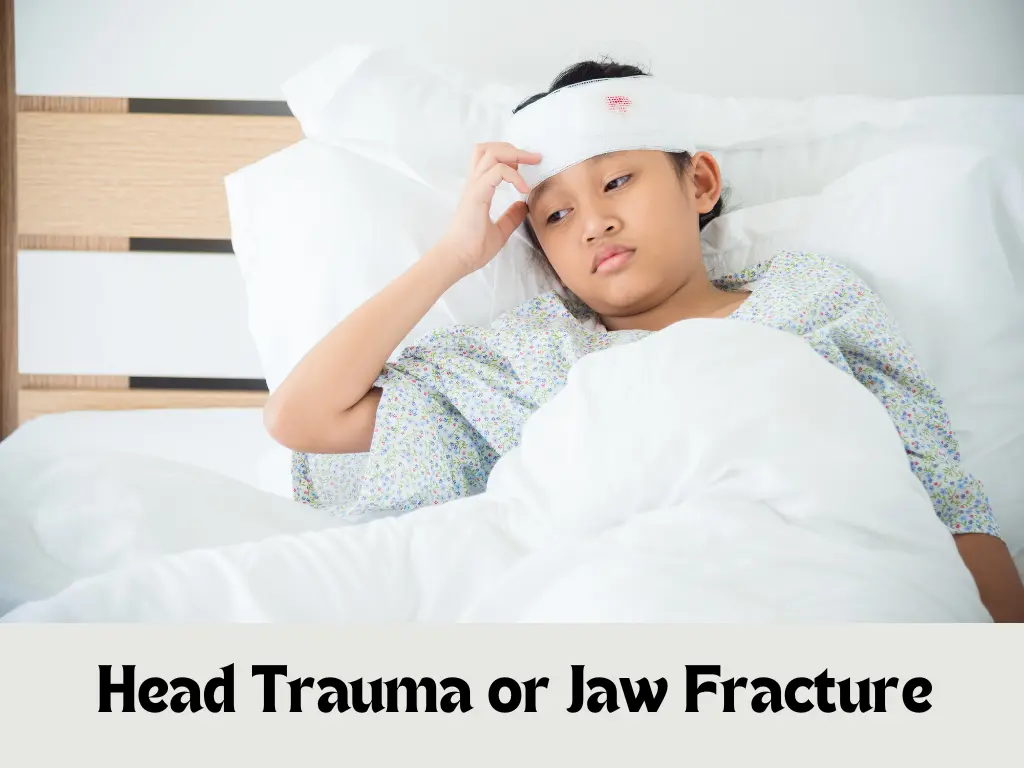Dental Trauma in Children: Types & Initial Treatment
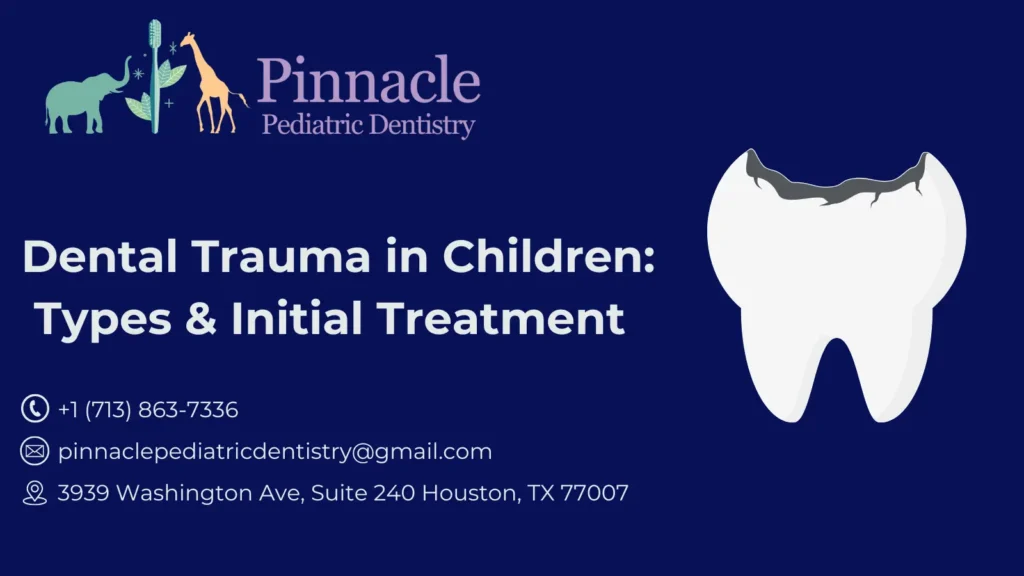
According to the guidelines of the American Academy of Pediatric Dentistry, the greatest incidence of dental trauma in children occurs at 2 to 3 years of age, when motor coordination is developing.
However, the most common injuries to permanent teeth occur secondary to falls, followed by traffic accidents, violence and sports. You can use mouth guards to prevent sports-related dental injury in your children.
Types of Dental Traumas in Children
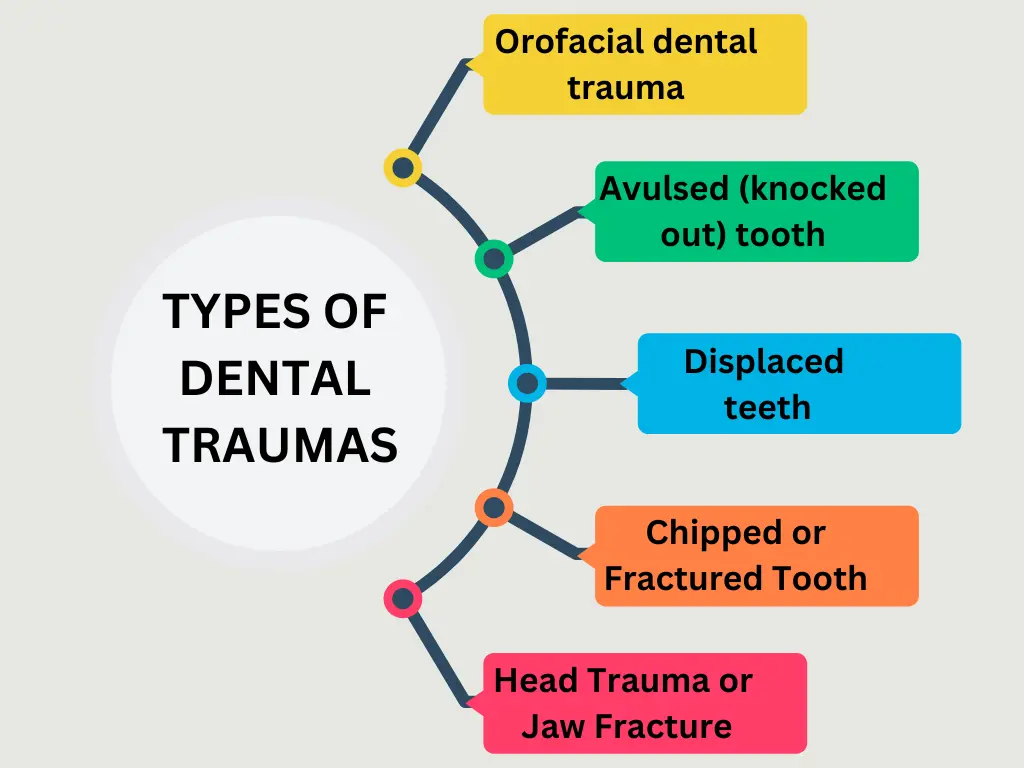
Dental injuries are common among children nowadays. So, we have mentioned the most common types and guideline to initial treatment.
1. Orofacial dental trauma
If orofacial, or traumatic dental injuries in children (face or teeth) occurs, clean the area well and evaluate the area. If the area is bleeding, apply pressure to attempt to stop the bleeding in order to visualize the area better.
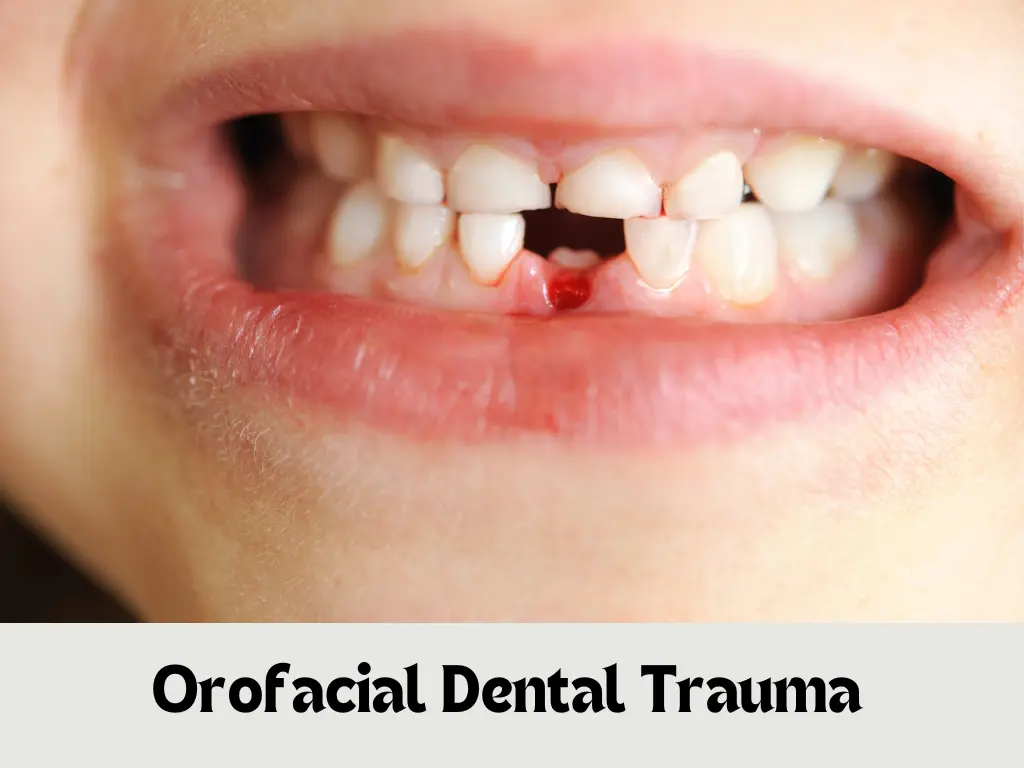
If you are unable to get the bleeding to stop, please call our after-hours emergency number to contact the doctor on call.
2. Avulsed (knocked out) baby tooth
If your child knocks out a baby tooth, attempt to locate the tooth and make certain that the child has not aspirated the tooth (placing it in his/her lungs). After locating the tooth, clean the area and apply pressure to the area to get the bleeding to stop.
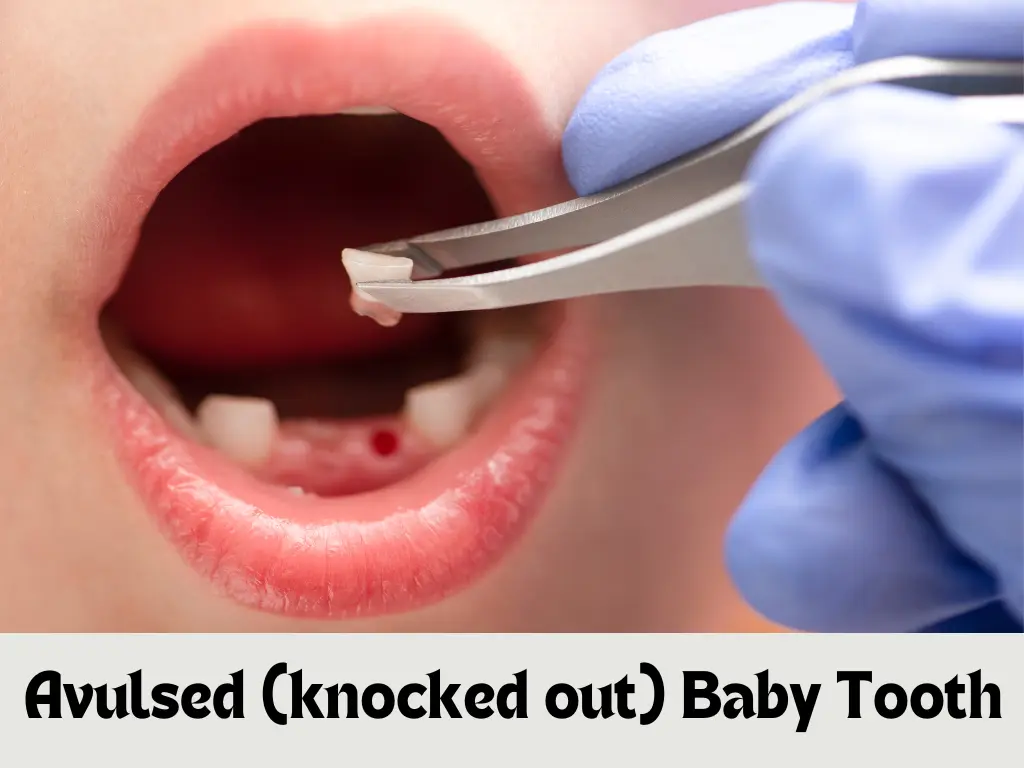
Give your child Ibuprofen (Motrin or Advil) or Acetaminophen (Tylenol) for pain. Don’t give aspirin, as this will increase the bleeding. Also, don’t try to place the tooth back in your child’s mouth.
3. Displaced baby tooth
If your child displaces (the tooth is in a different position) a baby tooth, bring your child in as soon as possible for an emergency evaluation. At this time, it will be determined whether or not the tooth requires any treatment or extraction.

4. Avulsed (knocked out) permanent tooth
If your child knocks out a permanent tooth, find the tooth. Handle the tooth by the crown, not the root. Then, rinse with a small stream of saline or water, not soap.
Don’t clean or scrub the tooth root (as essential substances are present on the tooth root). Carefully inspect the tooth for any fractures. If the tooth is intact (not fractured on the root), try to reinsert the tooth into the socket. Have the patient hold the tooth in place by biting on a piece of gauze or a wash cloth.
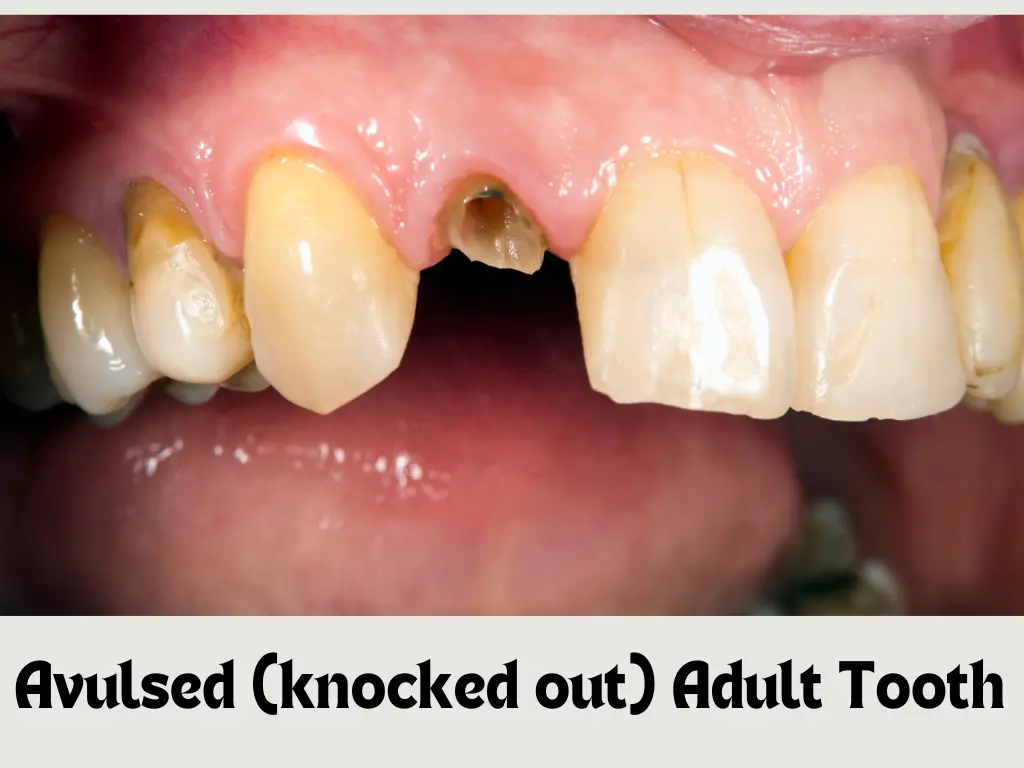
If you are unable to put the tooth back in the socket, transport the tooth in a cup containing cold milk, the patient’s saliva or saline. Or, if the patient is old enough (mature enough not to swallow the tooth), then the tooth can also be transported in the patient’s mouth (inside the cheek).
Call Pinnacle Pediatric Dentistry immediately, so that the tooth can be re-implanted. The best prognosis is given when re-implanting the tooth in less than one hour. Remember, the faster you act during dental emergency, the better your chances of saving the tooth.
4. Displaced permanent tooth
If your child displaces a permanent tooth, bring the child in as soon as possible for an emergency examination. At this time, we will evaluate the patient and treat accordingly.
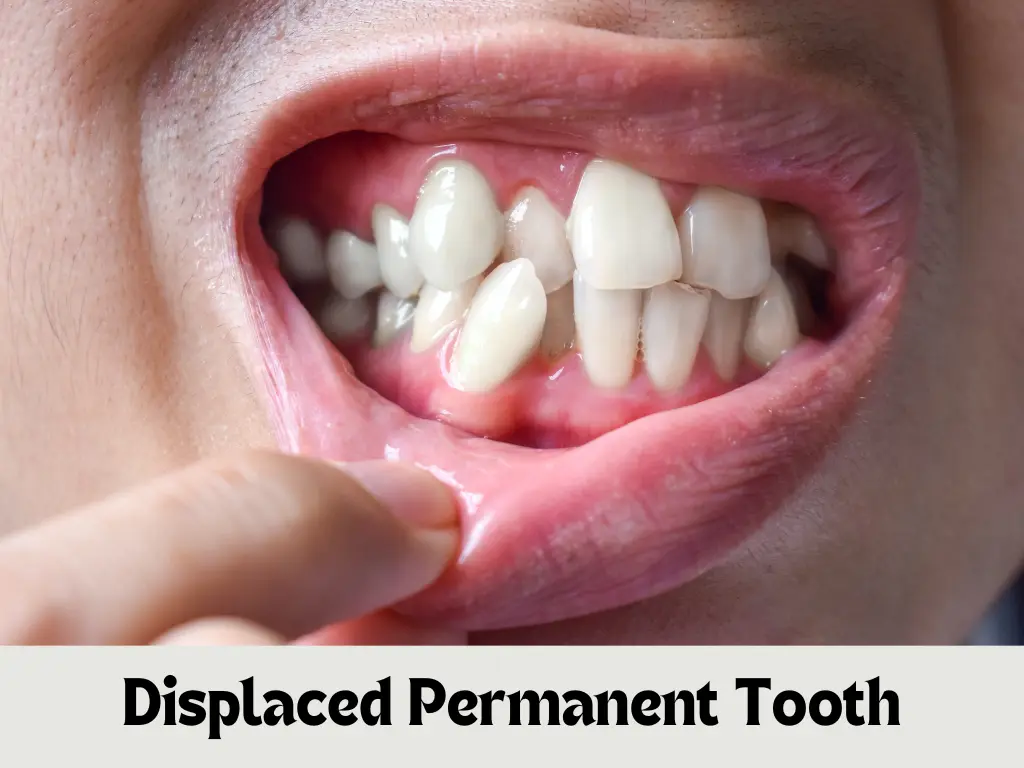
5. Chipped or Fractured Tooth
If your child chips or fractures his/her tooth, contact our office immediately. Traumatic dental injuries require quick action to save the tooth, prevent infection and reduce the need for extensive dental treatment.

Rinse the mouth with water and apply cold compresses to reduce swelling if the lip was also injured. If you can find the broken tooth fragment, place it in cold milk, saline or water and bring it with you to the dental office.
6. Head Trauma or Jaw Fracture
Your child will require immediate attention. A severe head injury can be life-threatening. Take your child to the nearest hospital emergency room for evaluation and/or treatment.
